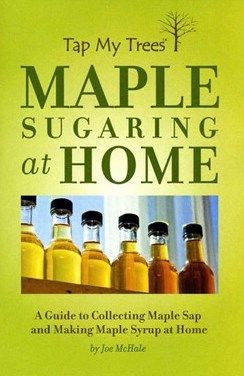I think one of most wearing parts of being the parent of a food-allergic kid (POFAK, for short), is constantly feeling like I'm in the kitchen. There are a lot of great ready-to-eat options out there if you're only dealing with one or two allergens. For example, Luke can't have peanuts, Neal can't eat anything with gluten, and I can't have shellfish or wheat. They're common allergies, and while they may cross things off the list to eat, trust me, the padding on my rear end isn't suffering any!! As we go through the family, the product list gets smaller; avoiding milk AND soy AND nuts knocks a lot of things out for Jude and Matthew. And then we get to Celia and Damien, whose "can have" list fits on the back of a business card. We've slowly added a few pre-packaged foods, but for the most part, if we want to eat, somebody has to be in the kitchen. Needing to work around food allergies is a major reason why I am insisting that the kids take cooking courses as they get older. Not just "learn to cook a recipe," but learn the science of cooking so they can take apart and rebuild recipes, and technique to skillfully change up a dish's presentation. Sometimes the difference between "This again???" and "Wow, that looks interesting!" is cutting a sweet potato into matchstick julienne instead of cubes.
With food allergies, sometimes the hard part is making feeling "normal," and having food that doesn't LOOK like it's "allergy food." Many of us joke that it's like spinning gold out of straw...or sometimes, spinning gold out of thin air! Parties can be hard for food-allergic kids. They want treats, too! For Celia's birthdays, we've had cakes made out of cotton candy, and even a marshmallow molded into an Olaf. Back when we only had two foods to work with, I was making a fruit tray with dip for a Christmas party, and she wanted to know if I could make strawberries with "her kind" of dip.
Uh...ok.
So me and my buddy Google got down to business. Most marshmallow fluff recipes call for eggs. They are something she has "normal" allergies to -- they can trigger anaphylaxis and kill her. Not gonna work. Searching for "Vegan Marshmallow Fluff" (inherently egg free) got lots of ideas, but all containing foods she can't have, especially soy. That "only" triggers GI bleeding...yeah, I think we'll skip that too. I was starting to give up hope. One last search and I was going to have to tell her that she might have to choose one or the other. I entered "Egg Free Marshmallow Fluff recipe" and found this. It wasn't "fluff" -- it was a whoopie pie filling. But it was a workable recipe. Cue the choir of Christmas angels!
I started subbing foods in my head as I read the ingredient list. Gelatin -- Pork-based gelatin (Knox brand) is safe for us. Water, check. Maple syrup...not safe, but we can use Lyle's Golden Syrup instead. Vanilla isn't a safe flavoring, but plain rum is, as is Crystal Diamond Kosher salt. We could make this work. (Or destroy the kitchen trying.)
Faux Fluff:
1 envelope gelatin
1/4 cup water
Mix together and microwave for 30 seconds. Pour to mixer bowl. Add:
1/2 c. golden syrup
1/2 tsp rum
1/4 tsp salt
Start mixing. Mix on high speed for 10-12 minutes to create the marshmallow.
After 2-3 minutes, you can see the sugar turning fluffy.
By golly...after 12 minutes, we have a soft marshmallow-type thing going. This may work after all! (The difference between this and "regular" marshmallows is stopping while the marshmallow is still warm and soft -- think the difference between soft and firm peaks with either whipping cream or egg whites.)
Celia came wandering in at this point. She decided it needed inspection by a "Quality Control" officer. She deemed it "perfect."
Ok, now for the real test. Everybody's seen the whipped cream-and-strawberry Santas making the rounds on Pinterest. Could I make THOSE happen?? I scooped some of our wannabe fluff into a zip-top bag, snipped the corner, and started filling cored strawberries. (Cut the green/tops off a strawberry, slice of a little bottom so they stand up, and core out a little of the berry to stuff with fluff. If you're making Santas, use the lopped-off point for your hat. If you're not, put them in a bowl and snack.)
Verdict: they sort of are possible. I think if I was filling them and serving immediately, yes the Santa-hat-option would work. But the few test ones I made started to have the tops slip-siding after an hour in the fridge -- I think between from the marshmallow setting in the cold and the sugar in the fluff, it was almost macerating the berries from the inside, I didn't think they'd hold overnight. In the end, I made filled strawberries, they just didn't have caps on them. Celia was good with that, and they held up fine as "Strawberry Poppers".
She decided she wanted to fill a couple.
And decorate the sides. The more marshmallow, the merrier!
And eat them on the spot, of course.

See that face stuffed full of a special treat? Yeah, it's worth the work. Rumpelstiltskin ain't got NOTHING on a POFAK.
©2012- 2016 Adventures with Jude. All rights reserved. All text, photographs, artwork, and other content may not be reproduced or transmitted in any form without the written consent of the author. http://adventureswithjude.com















































